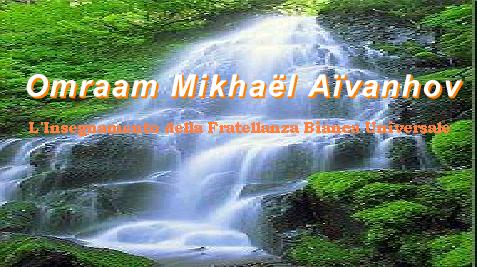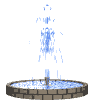|
|
 |
![]()
|
The Veda (in sanskrit, “knowledge”), they perhaps constitute the most ancient documents of the human spirituality. The Veda consists primarily of four collections of hymns, detached poetical portions, and ceremonial formulas. The collections are called :
The Veda they have been put in writing by the great rishi Vyasa which he also wrote the Upanishads, the Vedanta-sutra (comment on the essence of the Veda), the Puranas and the Mahabbarata (commonly called "fifth Veda"). The rishis were great wise man, which thanks to their super consciousness they saw (the root of Veda it is that is vid to see) the truths and then transmitted her to the others. You treated therefore of received revelations and not of elaborate philosophical systems.
|

![]()
|
The Puranas ("harvests of histories of the ancient times" or " Sacred Traditions"), comparable to our Bible, treats five matters: the creation of the universe; her destruction and recreation; the genealogy of the divinities; the various epoches of the world with indication of the spiritual behavior to be held in the various cycle; history of great dynasties. The Puranas are separate in 18 greater (Maha Purana) and 18 young persons (Upa Purana), in each of them we find the presence of a particular divinity, of which life is introduced, cult, mythology, as well as the demonstrations of the avataras and the relative spiritual teachings. Tradition attributes the Puranas to Vyasa, a legendary rishi, or sage, purportedly the compiler also of the Veda and the epic poem Mahabharata The 18 Maha-Purana are:1) Brahma Purana 2) Padma Purana 3) Vishnu Purana 4) Vayu Purana 5) Bhagavata Purana 6) Naradiya Purana 7) Markandeya Purana 8) Agni Purana 9) Bhavishya Purana 10) Brahmavaivarta Purana 11) Linga Purana 12) Varaha Purana 13) Skanda Purana 14) Vamana Purana 15) Kurma Purana 16) Matsya Purana 17) Garuda Purana 18) Brahmanda Purana. |

![]()
 |
|
The avataras are: Matsya, Kurma, Varaha, Narashima, Vamana, Parasurama, Coppers, Krisna, Buddha. The neighbor is denominated Kalki ("the destroyer of the impurities") the tenth avatar that will appear according to the tradition in this epoch. And' interesting to observe that the definition of "destroyer of the impurities" or "of the dirt" it recalls one of the labors of Hercules: Labor 5, The Augean Stables. "For the fifth labor, Eurystheus ordered Hercules to clean up King Augeas' stables. Hercules knew this job would mean getting dirty and smelly, but sometimes even a hero has to do these things. Then Eurystheus made Hercules' task even harder: he had to clean up after the cattle of Augeas in a single day. Hercules went to King Augeas, and without telling anything about Eurystheus, said that he would clean out the stables in one day, if Augeas would give him a tenth of his fine cattle Augeas couldn't believe his ears, but promised. Hercules brought Augeas's son along to watch. First the hero tore a big opening in the wall of the cattle-yard where the stables were. Then he made another opening in the wall on the opposite side of the yard. Next, he dug wide trenches to two rivers which flowed nearby. He turned the course of the rivers into the yard. The rivers rushed through the stables, flushing them out, and all the mess flowed out the hole in the wall on other side of the yard"(http://www.perseus.tufts.edu/Herakles/stables.html). The waters of the rivers of which he has used Hercules would correspond, symbolically, to the spiritual Waters (or the teaching of the philosophy initiatic) of the eleventh sign, the Aquarius, waters that would be able to purify the subconscious of the man. If we consider that Aïvanhov connects the symbol of this labor of Hercules to the sign of the Aquarius (chapter 12 " The Twelve Tribes of Israel and the Twelve Labors Of Hercules in Relation to the Zodiac" in "The Zodiac, Key to Man and to the Universe ") deep correspondences are deduced among the figure of the kalki avatar (the destroyer of the dirts) and the Old Wise man (of the symbol of the Aquarius) that it pours again, through its hands, purifying waters on the humanity. Not by chance, the symbol of the teaching of the "Universal White Brotherhood", transmitted in this epoch by P.Deunov and O.M. Aïvanhov accomplishedly recalls the Aquarius's age, the new tides of universality, brotherhood and unity.
|

![]()
|
According to the Trimurti (Trinity) Indian we have the following distinctions: Greed is the creator, Shiva assures the transition from a world to another, Vishnu, it enters the whole cosmic demonstration instead to sustain her, and to maintain her (Vishnu the Preserver ), manifesting himself in numerous avatara (Incarnations or Descents) to protect the world from the strengths that periodically they put in crisis the cosmic order or the dharma. If Vishnu didn't intervene in the moments of crisis, the strengths disgregatricis would have the upper hand. Vishnu is therefore the custodian of the universal law, of the dharma. The evolutionary cycles are separated every in four called periods yuga: *The first period is the age of the gold or the Truth (Satya Yuga), in which the humanity has a spontaneous wisdom given by his/her own proximity to the divine one;; *he second is the age of the silver (Tetra Yuga); * The bystander is the age of the Bronze (Dvapara Yuga); * the last one is the age of the Iron (Kali Yuga). Kali-yuga, Hindu, is the fourth and final yuga of increasing disorder and distress. The world is at present in a kali-yuga (The Oxford Dictionary of World Religions, New York, Oxford University Press, 1997, p. 526). KALKI is the last of the avatars of Lord Vishnu. |

![]()
|
Currently the man is found in the Kali Yuga at the end of which a new Age of the gold will be had. Kalki will be, according to the tradition of the Puranas, the next avatar of Vishnu, the founder of the new one of the age of the gold. It will appear, symbolically, a white horse riding, and grasping a sword, and it will be the end of the Kali yuga, the actual dark epoch in which it prevails the passionate life and the man it risks to estrange more always from hisr own divine nature, from the really itself and therefore from the proper dharma and alive, because of this, great anguishes and sufferings. Also here deep analogies are among the figure of the Kalki avatar and the arrival in the apocalypse (book of revelations - chapter 19) of the Christ "... Then I saw heaven opened and here came a white horse! The one riding it was called “Faithful” and “True,” and with justice he judges and goes to war. His eyes are like a fiery flame and there are many diadem crowns on his head. He has a name written that no one knows except himself. He is dressed in clothing dipped in blood, and he is called the Word of God. The armies that are in heaven, dressed in white, clean, fine linen, were following him on white horses. From his mouth extends a sharp sword, so that with it he can strike the nations. He will rule them with an iron rod, and he stomps the winepress of the furious wrath of God, the All Powerful. He has a name written on his clothing and on his thigh: “King of kings and Lord of lords.” To restore the dharma means the actual cycle to help the man to find again inside him itself own divine nature so that can concretely be revealed in the individual conscience, in the individual comportanentis and consequently in those collective. « You are gods » Jesus admonished in the Gospel! Here is to live with the whole proper being this truth is the individual and collective dharma that will allow to respect you Cosmic Moral Laws . Not the ascetic withdrawal but the realization in the subject, in the internal temple, in the behaviors, in the thoughts and in the feelings. We can perhaps be affirmed that the Avatar, under the profile of the demonstration, putting aside from possible and disputable identifications with one determined natural person, it is certainly a divine Principle that manifests him, a Teaching Initiatic that renders explicit him (what it goes down on the humanity as the water that the Essay of the Aquarius pours again on the collectivity) and that it turns him to the man offering his hand to lift him/it from the dark, from the suffering in which it is fallen. And' a Teaching that offers to all those people who want possibility and methods (read this page) to find again " the fatherly house." |
![]()
|
|
|

|




